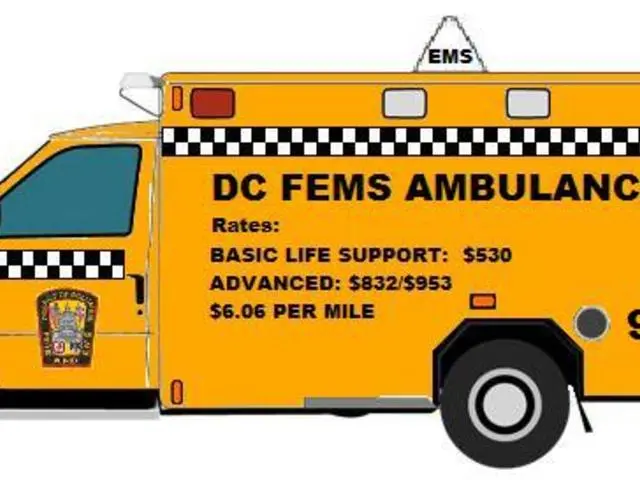Shingles' initial phases: Indications and symptoms
Shingles, a painful and often uncomfortable condition caused by the reactivation of the herpes zoster virus, can present itself in various ways. While many people associate shingles with a rash, it's essential to be aware that early symptoms may not always be as obvious.
One such instance is known as zoster sine herpete, where shingles symptoms can occur without a rash. The common early signs of this type of shingles include localised nerve pain, tingling, or burning sensations, often following the path of a single nerve on one side of the body. These sensations can be accompanied by systemic symptoms such as headache, fever, and feelings of malaise or tiredness. In some cases, muscle aches, stomach pain, or flu-like symptoms might also be present [1][2][3][5].
For shingles affecting the face or eye area (herpes zoster ophthalmicus), early symptoms can include tingling or burning pain over the eye, forehead, and temple before a rash potentially develops [4].
Diagnosis of shingles, especially in cases without a rash, can be more challenging. However, the nerve pain and sensory symptoms in a dermatomal pattern often guide clinical suspicion [5].
It's crucial to seek medical attention if you experience early symptoms of shingles, especially if you have a history of shingles or are at a higher risk of developing an acute outbreak. A doctor may prescribe antiviral medication, such as famciclovir, valacyclovir, or acyclovir, to treat shingles [6]. Early treatment can significantly lower the risk of complications [7].
Pain-relieving medicine can also help ease shingles symptoms. Over-the-counter remedies like calamine lotion, colloidal oatmeal compresses, and baths, and cold compresses may provide relief from the itching associated with shingles [8].
While there is no cure for the shingles virus, vaccination can help prevent onset and recurrence of shingles, as well as reduce the risk of complications. People over 50 and those with weakened immune systems should receive vaccination when appropriate [9].
Shingles can sometimes resemble other conditions, such as herpes simplex virus infection, allergic reactions, cellulitis, or eczema. Internal shingles, which can affect systemic areas of the body, are more common in older or unwell individuals [10].
Understanding the early signs and symptoms of shingles, both with and without a rash, is vital for prompt treatment and management of this condition. If you suspect you might have shingles, it's always best to consult a healthcare professional.
- Shingles, a condition caused by the herpes zoster virus, can present without a rash, a case known as zoster sine herpete, which includes localized nerve pain, tingling, or burning sensations.
- These symptoms often follow the path of a single nerve on one side of the body and can be accompanied by systemic symptoms like headache, fever, and feelings of malaise or tiredness.
- In cases of shingles affecting the face or eye area (herpes zoster ophthalmicus), early symptoms may include tingling or burning pain over the eye, forehead, and temple before a rash potentially develops.
- Diagnosis of shingles, especially without a rash, can be more challenging, but nerve pain and sensory symptoms in a dermatomal pattern often guide clinical suspicion.
- Early treatment of shingles with antiviral medication such as famciclovir, valacyclovir, or acyclovir can significantly lower the risk of complications.
- Pain-relieving medicine, over-the-counter remedies like calamine lotion, colloidal oatmeal compresses, and cold compresses, can help ease shingles symptoms and provide relief from itching.
- While there's no cure for the shingles virus, vaccination can help prevent onset, recurrence, and reduce the risk of complications for those over 50 and those with weakened immune systems.
- Shingles can sometimes resemble other conditions like herpes simplex virus infection, allergic reactions, cellulitis, or eczema, especially in older or unwell individuals.
- Internal shingles, which can affect systemic areas of the body, are more common in older or unwell individuals.
- Understanding the early signs and symptoms of shingles, both with and without a rash, is vital for prompt treatment and management, recommending a consultation with a healthcare professional when suspicion arises.
- scientist is exploring various aspects of shingles in the field of medical-conditions and health-and-wellness, hoping to develop predictive measures and advanced treatment options in the near future.
- Mental health is also a significant aspect of shingles, as individuals with conditions like bipolar disorder, depression, or neurological disorders like multiple sclerosis, psoriasis, or arthritis are more susceptible to shingles and its complications, emphasizing the need for proper skin-care and mental health management.




